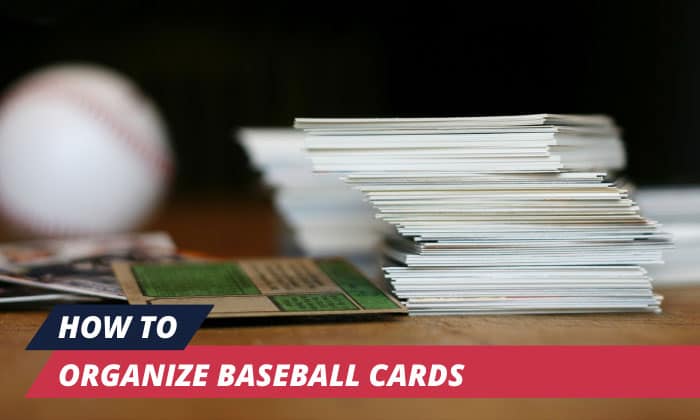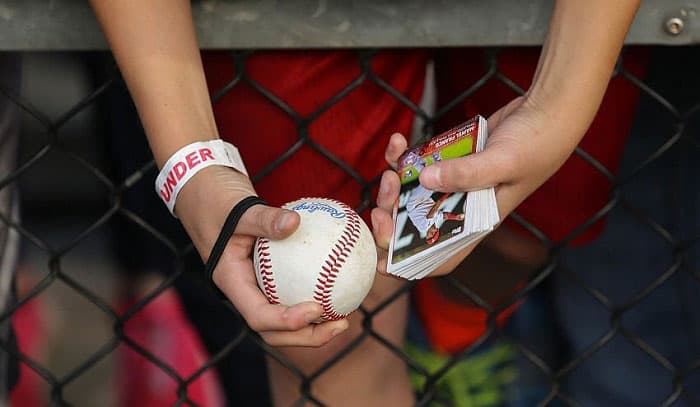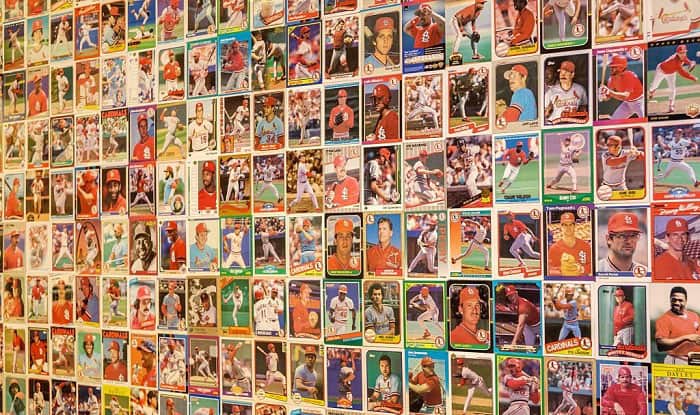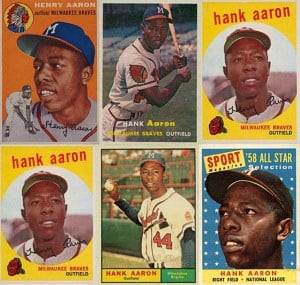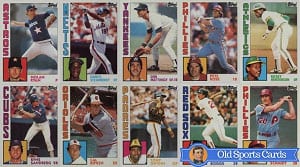Collecting baseball cards and memorabilia is a popular hobby among fans of the sport. Some do it just for fun, while others collect them to trade or sell once they have gained significant value over time.
Whatever your purpose for collecting baseball cards, it will help to store and keep track of your baseball card properly. This article will discuss how to organize baseball cards so they remain in pristine condition and will be easy to locate in your collection.
Contents
Ways to Organize Baseball Cards
If you’re one of those avid fans who’s been collecting baseball cards through the years, you’ve probably racked up an interesting collection by now.
First things first. The key to effective trading card organization is to decide what system will work best for you. For instance, most collectors sort baseball cards by individual players, while others will prefer to arrange them by team or season. Still, others organize their cards by brand or serial number.
It all boils down to personal preference, but you need to establish order right from the very start. That way, things don’t get messed up once you start organizing your baseball cards.
Baseball Card Storage Ideas
Proper baseball card organization also begins with the correct storage. Keeping your baseball card in mint condition is crucial, especially if you intend to sell them on auction sites and online marketplaces later on.
Cards can take a beating with excessive handling, and even minor dents and creases can cause them to lose their value considerably. For this reason, it is advisable to invest in trading card protectors and storage organizers that will help shield your baseball cards from unnecessary damage.
There are many options available when it comes to storing baseball cards. However, most baseball card collectors with an extensive collection use one of two popular methods:
- Binders – They come in different variants and sizes, but the 9-slot per-page binder is highly recommended if your baseball cards number by the hundreds. You can easily purchase additional pages and binders as your collection grows.
- Storage boxes – On the other hand, these boxes are the best way to go if you have thousands of baseball cards in your collection. Monster storage boxes can hold up to 5,000 trading cards and you can get one for less than $20.
Related: How to store baseball cards with 7 effective methods?
Organizing Baseball Cards by Categories
Once you have decided on your storage option, let us now discuss different methods to organize sports cards depending on your preference or need. As mentioned earlier, you can use different categories when organizing baseball cards: by players, by teams, or by season.
Method 1. Organizing by Players
Individual player cards are among the most traded, so it makes sense to organize your collection in this manner. Moreover, you’ll find that the most valuable and highly sought baseball cards on online card shops and auction sites are that of individual players.
Here are the steps to organizing baseball cards by players:
- Sort out your baseball cards into separate stacks according to the last name of each player. Then, arrange each stack in alphabetical order.
- Next, take each player’s stack and arrange the cards depending on the year they were released. This will help in case you’ll be looking for a player card from a particular series later on.
- Place the alphabetically arranged cards in a binder or storage box starting with the earliest player card to the latest.
- If you’re planning to add to your collection, leave a few empty card slots between each player section when using a binder.
- Create labels on your binders to indicate what they contain (e.g., A-E, F-J). When using a storage box, you can simply use dividers with the player’s name written on top.
- Pros: By far, this is the easiest and most popular way to organize baseball cards. Baseball cards are usually identified by the year, manufacturer, and player’s name.
- Cons: Some baseball cards may feature multiple players. You might need to create a special section for these card types.
Method 2: Organizing by Teams
This method works best for baseball card collectors who follow a few of their favorite teams. Some card sets are also sold by teams, so organizing them in this manner can be beneficial as well.
Here are the steps to organizing baseball cards by team:
- Sort out your baseball cards into separate stacks according to the team each player played for. You can easily spot this on uniforms, team logos, or player information printed on the back of each card.
- For players who have played for multiple teams, refer to the most recent team at the bottom of the list.
- Next, arrange each team stack in chronological order from the oldest to the newest. This will determine that the featured player was on the active team roster for a particular year.
- You can now arrange team card stacks alphabetically and label your binders. Storage box dividers can be ordered online or you can get creative and make your own.
- Pros: Those who have favorite teams will find this organization method beneficial, including those who purchase baseball card team sets.
- Cons: Many players play for multiple teams. One will need to check when they played for a particular team when looking for a specific player card.
Method 3. Organizing by Season
Some collectors prefer to organize and save cards depending on the time they were produced and publicly released. This can be helpful when finding out if you own a baseball card from a particular series.
Here are the steps to organizing baseball cards by year or season:
- Check copyright information to know what season a particular baseball card belongs to. Just add one to the copyright year since baseball cards are released during the off-season.
- For older cards with no copyright info, just add a year to the latest stats printed on the back of the year to determine the season.
- Sort out your cards in separate stacks per season, starting from the oldest to the newest.
- Arrange your baseball cards in binders or storage boxes, insert dividers, and label each section according to the season.
- Pros: Baseball card identification starts with the season, followed by the brand, player, and card number. When looking for a 1968 Topps Mickey Mantle 280, you know exactly where to check.
- Cons: The process of having to add a year to copyright or stat info can get daunting. Be prepared to allow a margin of error when taking this route.
Other Tips for Organizing Baseball Cards
Now that you’ve successfully organized your baseball cards according to your preferred method, here are a few more suggestions that can step up your experience and enhance your passion for baseball card collection.
1. Create a database
Catalog baseball cards in your collection using an online spreadsheet that indicates all essential card details plus their location in your storage. That way, you won’t have to sort through your binders or boxes to find out if you own a particular card or not.
2. Use an organize app or digital card copies
Consider downloading a sports card organizer app to store digital copies of your baseball cards. Apps like Sports Card Album enable you to upload your entire collection, while SportsCardsPro and CardGeniePro come with an added card value feature.
3. Connect with other collectors
Hook up with other baseball card collectors through forum discussion sites like Quora and Reddit. There are several relevant threads where you can ask questions, share ideas, or learn new tactics regarding baseball card collecting, trading, and selling.
4. Find a good storage place
Protect your baseball cards from dust, mold, moisture, and other harmful elements that can affect their quality and condition. Keep your binders or storage boxes in a cool and dry area, away from direct sunlight.
Conclusion
Many baseball enthusiasts won’t let a playing season pass without purchasing sports cards to add to their collection. Over time, the sheer number of cards they have accumulated has turned casual fans into avid and passionate baseball card collectors.
Knowing how to organize baseball cards systematically is part and parcel of this popular pastime. Undoubtedly, looking through a neatly chronicled baseball card collection is more exciting and enjoyable compared to random card stacks that don’t tell a story.

A powerful swing and the ball is flying across the field, just one hit, and we might never forget the thrill it brings. I do not know about you, but I never do. Every baseball game is the chance to compete with others and cooperate with your teammate. It is among my biggest passions.



